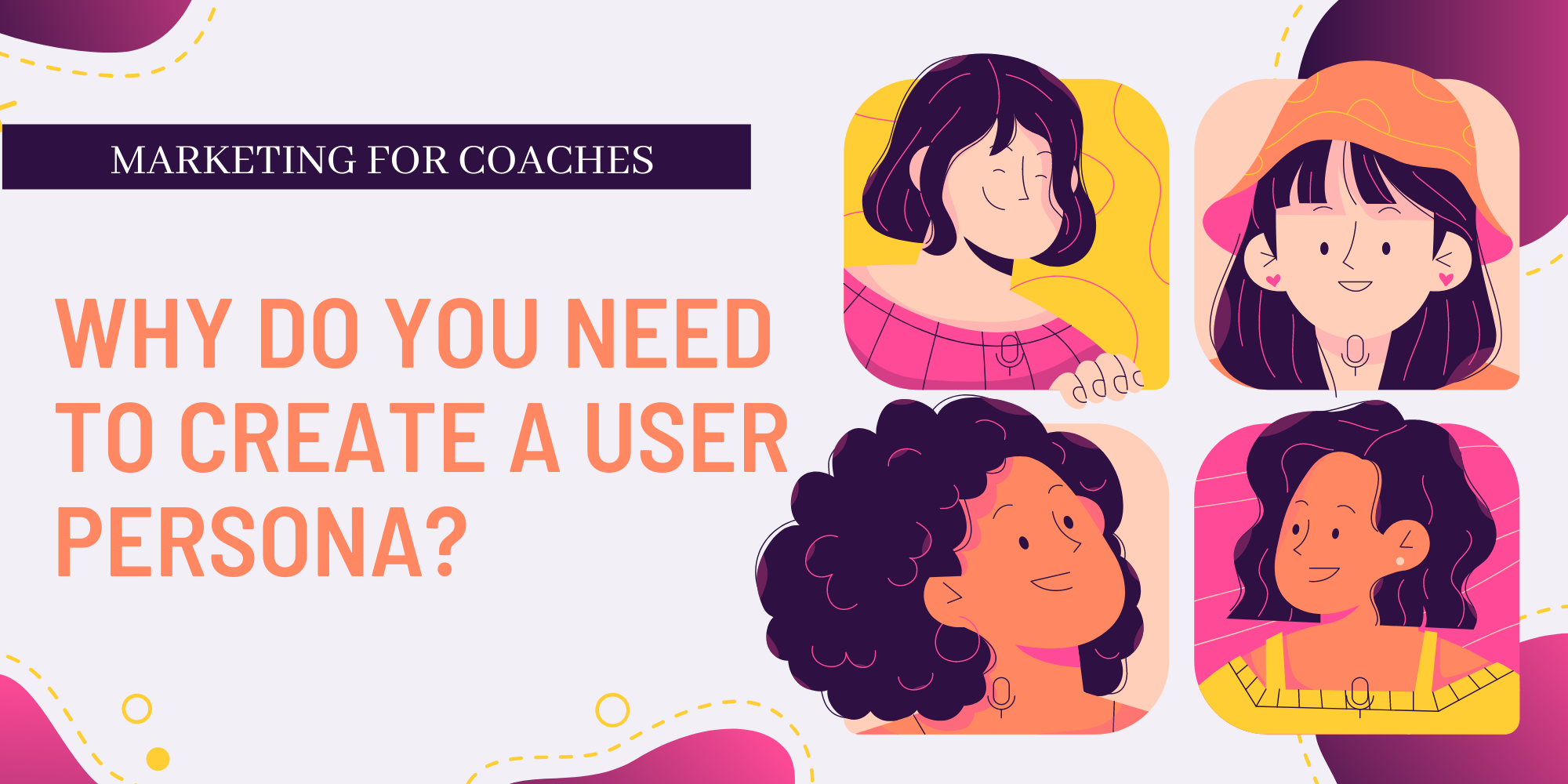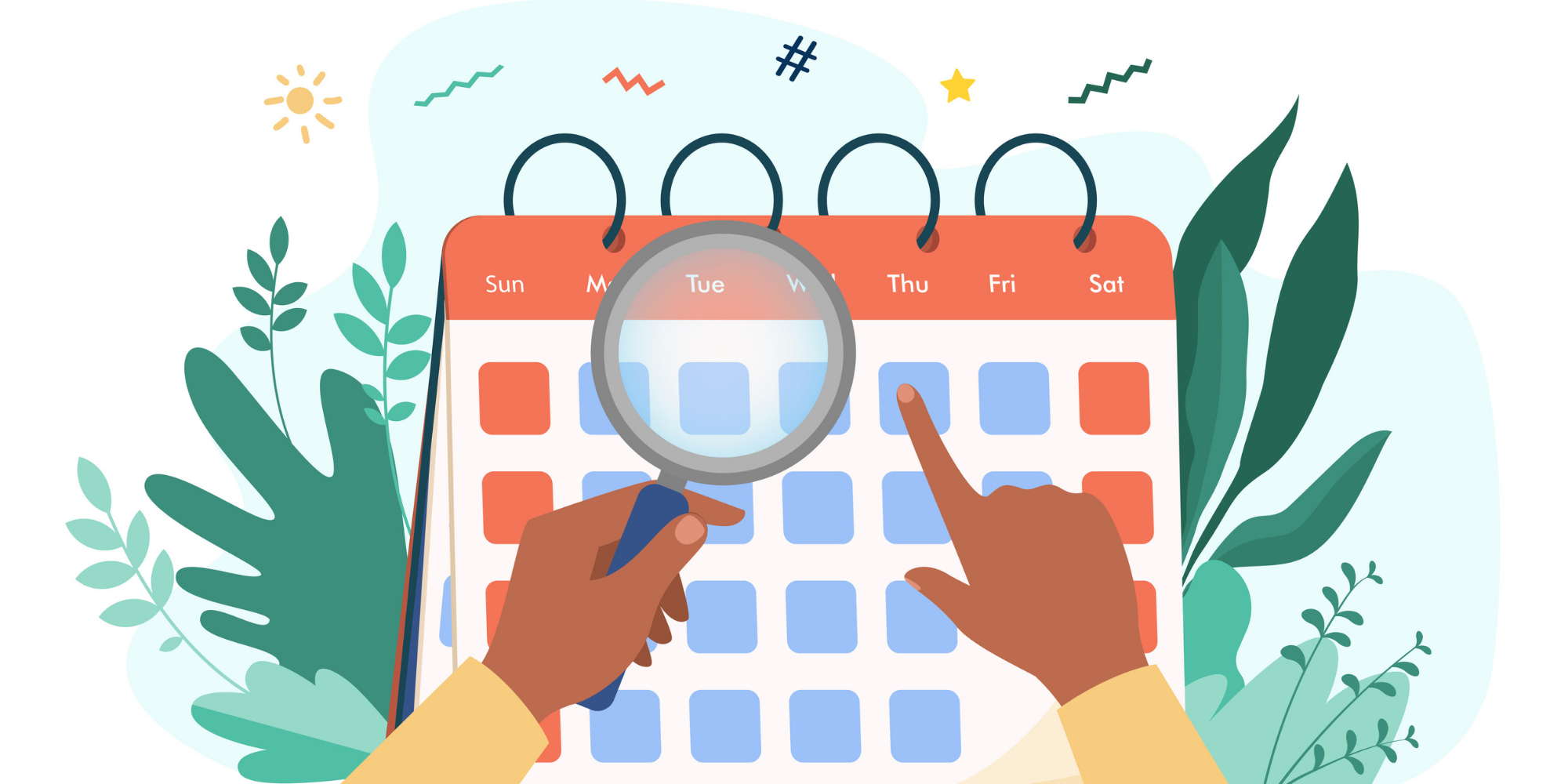As a coach, you're likely more focused on helping your clients than on marketing your practice, but marketing helps you stand out from the competition. One way to level up your marketing is to create a user persona. A user persona is a fictionalized version of your target client.
What is a User Persona?

User personas are prototypical users created with common characteristics that represent a larger user group. This character represents your ideal customer. You can create some user persona examples by researching the common needs, goals, and behaviors of potential clients and using them to develop an ideal persona. You don’t need to represent all people; you should focus on the most important client goals and characteristics.
Why Do You Need a Persona?
.png?width=300&name=Copy%20of%20inside%20article%20(5).png)
Personas give you a better understanding of your customers. This understanding lets you create marketing campaigns, website updates, social media content, and other messaging that will appeal to your target customer.
You can create more than one persona if you have multiple ideal customers. Having many user personas then lets you adjust your approach based on which group you are trying to attract.
A user persona is typically presented in one or two pages that detail the goals, skills, needs, and behaviors of your target customer. When developing your user personas, add whatever information is relevant.
For example, as a coach, your persona templates would likely include specific information about customer health and wellness goals, factors that contribute to their stress levels, and other specific wellness information.
A detailed user persona created from real data lets you customize the customer’s journey with their specific characteristics in mind from the point they find you online, to booking their first session, to after-care. A persona will help you identify your clients’ needs and expectations and address their concerns. Successfully crafted personas help you:
- Better identify and understand your target customers
- Build your website and marketing materials with major user groups in mind
- Focus on the expectations and goals of your most valuable customers
- Create your customer service process around your most important customers
How to Create a Persona
.png?width=300&name=Copy%20of%20inside%20article%20(3).png)
If this is your introduction to this part of the marketing process, use these user persona templates to start. Think of your target customer and create one or more profiles. To create effective personas, do your marketing research upfront.
Don’t makeup information. Each profile should be based on actual data. You can start by looking through your customer profiles to get an idea of your ideal customer. Other places to find basic data include market research reports and competitive analysis. Look through your social media and that of your competitors to identify the types of customers who interact with you most often.
Look through comments and customer reviews and pull out keywords and ideas. If you have conducted client opinion surveys in the past, pull up the analysis. Note commonalities among demographics and other quantitative data, then look over open-ended questions for common concerns and motivations.
Use your findings to create your user personas. First, give your persona a name and a photo. Fill out their demographic information, including location, age, marital status, employment status, family, education levels, job, and other useful data.
Next, determine their goals and needs. Detail information about what motivates your persona and their goals for coming into your office. Come up with a representative quote that encompasses their personality.
Identify their frustrations and pain points. Then, use the information to write a brief bio and assess their personality.
Identify how they like to receive their information. Are they more receptive to email messages? Do they interact with businesses on social media? Are they comfortable with video coaching sessions, or do they prefer to meet with you in person?
Answering these questions to identify behaviors and preferences lets you better tailor your marketing strategy. When you have an idea of what your persona does every day, you can brainstorm messaging that is likely to resonate with them and use their preferred channels to communicate.
When you’re finished, sort your personas and rank them by priority. You can use any persona to build a marketing strategy, but it’s best to focus on your best and most valuable clients when pursuing overarching goals like revamping your website.
Knowing what motivates your ideal target client to seek you out on the internet will help you analyze your website and social media platforms with an eye for SEO. When you know what your customers are looking for online, you can build better keywords and phrases into your site.
It’s best to limit your user personas to a maximum of four. You want your user personas to represent the majority of your audience, and creating a large number of separate personas from your outliers can blur your marketing goals. Instead of creating campaigns that appeal to a wide range of your ideal clients, you might accidentally end up focusing on a handful of people who don’t really represent your broadest user base.
Creating a Unique Value Proposition with Your User Personas
One important function of the user persona is to help you create a unique value proposition (UVP).
What is a Value Proposition?
.png?width=300&name=Copy%20of%20inside%20article%20(2).png)
Your unique value proposition refers to how you benefit your customers. It is a succinct definition of how you stand out among your competitors and what it is that makes your clients choose your practice over other coaches.
Your UVP lets you differentiate yourself easily. When you know what you offer that your competitors don’t, you can better communicate it to potential clients. Use this data to appeal to your target audience, clearly indicating your value in the market. An effective UVP will align with your customers’ needs, but first, you need a user persona.
Here is a value proposition example. Tech platform Slack’s unique value proposition is: “Be more productive at work with less effort.” This UVP clearly states the platform’s benefit to its users. It appeals to managers by showcasing how much more productive their employees can be, and it appeals to lower-level employees because they don’t have to manage as many applications to do their jobs.
How to Create Your Unique Value Proposition With User Personas
Developing user personas is the first step in identifying your unique value proposition. If you’ve already started your user personas, then you have step one of your UVP development process down. Specifically, step one in the UVP process is identifying and defining your ideal customer, which is exactly what you’re doing when creating your user personas.
Remember: Use your most valuable persona to create your UVP. When you know your customer’s behaviors and what motivates them to schedule a coaching session, you can better answer the question of what makes you unique as a service provider.
Step two in the UVP development process is to list your value. Pinpoint everything that makes you stand out and the unique benefits you offer to your clients. Be clear and specific. Your UVP should give customers an immediate idea of what they’re getting from your business without having to sift through a lot of information.
When you’ve narrowed down your unique benefits, create your UVP. First, write a headline, followed by a subheader, then the key benefits of your practice. Focus on information that is most relevant to your user personas. Their goals, motivations, and desires will help you create brand-specific messaging, including your UVP. It should appeal to anyone who aligns with your user persona.
Some of your coaching clients will be looking for you when they are in crisis. They might not be interested in looking deep into your website to see if you can help them with their immediate needs. Having an effective UVP lets them know what to expect right away, even if they are just looking through a database.
You can include your UVP in a SofiaHealth listing, putting it front and center and improving your chances of matching with the right clients. From the customer's perspective, a UVP helps them to better assess your services and lets them determine if you would be a good match for their needs.
Final Thoughts
Marketing is often one of the more daunting parts of running your own practice, but taking the time to do some market research and use the results to create a small group of user personas can make the process easier.
You can use these personas to tailor your marketing campaigns, creating messaging that is likely to appeal to your ideal customer. Having an idea of their communication preferences and daily tech uses then lets you post your messages in places where they are more visible.
Get started today. Look through existing customer intake forms, social media followers, user reviews, and competitive analysis to start creating your user personas.
When you’ve finished, define your UVP. If you have a SofiaHealth profile, add your UVP to tell prospective clients how you stack up against competitors. Once you’ve taken a little time upfront to do the research, you can start creating marketing campaigns that convert your future clients, and you might even get excited to market your business.



.png?width=300&name=Copy%20of%20inside%20article%20(4).png)




